Back to black: Edmund de Waal plays with dark glazes in new body of work
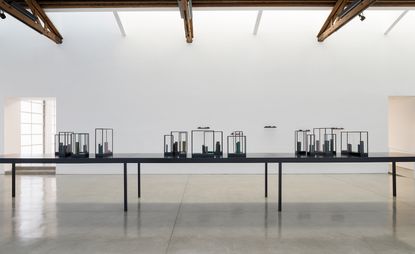
‘This is a huge departure, quite a scary one, actually,’ says Edmund de Waal of ‘Ten thousand things’, his upcoming solo show at Gagosian Beverly Hills. For a world-renowned ceramicist who threw his first pot at the age of five – and who’s since installed his elegant and haunting ceramic-filled vitrines beneath the pavement outside the University of Cambridge and atop the cupola of the Victoria & Albert Museum — that’s saying quite a lot. ‘It’s come out of a lengthy period of thinking about architecture and music and all kinds of other things, so it’s a really big show for me.’
For those who are familiar with de Waal’s work — mainly white, black, sometimes colored vitrines, carefully staged with Japanese-influenced pots, plates or cups that are created in an assembly-line-like fashion at his white-walled, gallery-sized South London studio — the format might not, at first glance, seem particularly groundbreaking. Even his use of black porcelain, which he showed at his 2013 debut with Gagosian in New York, and again at his 2010 solo at London’s Alan Cristea Gallery, isn’t entirely novel.
But over the last two and a half years, the artist has been experimenting with black glazes in an attempt to find ‘new shadows, gaps and spaces in his work’, he says. ‘And what those can do at scale.’
The decision to explore this darker terrain — in the form of hundreds of black vessels made with copper-and-tin-flecked glazes in dialogue with hunks of raw materials (from Cor-Ten steel and gold, to lead and plaster) all framed within various black aluminum-and-glass vitrines — began as a response to the revolutionary scores of John Cage, particularly his mid-century masterpiece The ten thousand things.
For de Waal, Cage’s brief residency in the early 1930’s at Rudolph Schindler’s King’s Road House in West Hollywood (now home to the MAK Center for Art and Architecture) was the starting point. ‘I’ve had a photograph of the Schindler on my wall for about 20 years,’ says de Waal, who hasn’t actually been back to the house for over a decade. Still, this meeting of modernist mavericks, argues de Waal, provided a mind-clearing platform that allowed Cage’s more iconic sonic experimentations to take shape.
‘The Schindler House with its concrete and timber coming together in unexpected ways and Cage being so decidedly radical about not letting anything lie – to free yourself from what you know, they seem to be different things. But they’re actually very similar in that they’re both experimenting in public. That’s really what this is about,’ says De Waal, who is making, glazing and placing his works in a looser, more intuitive fashion for his own public experiment in Beverly Hills. ‘I just picked up these blocks of Cor-Ten steel and thumped them down very rhythmically, in a very random way. It’s as close as I’ve ever gotten to doing a musical score.’
In years past, De Waal admitted his installations had a borderline over-determinacy about them, but claims his newfound freedom is ‘a lot more fun,’ he says. ‘Of course it doesn’t always work. In all proper experiments, some things go wrong.’
The exhibition might be seen as a through-the-looking-glass moment for De Waal’s obsession with vitrines. ‘The vitrine is a safe container, where you prevent the diaspora and when I started using vitrines that was the resonant stuff,’ says De Waal. ‘Now it’s much, much more sculptural. It’s an elbows-out kind of relationship between what’s going on with structure and objects.’
At Gagosian, de Waal is revolting against those safety barriers and virtually everything he was chasing in The White Road: Journey Into an Obsession, his new ‘history of brokenness and shards’ that documents recent pilgrimages to Jingdezhen, China, Dresden, Germany and Cornwall, England, the high holy places of porcelain, which has defined his delicate practice for the past three decades.
‘I was living in this obsessive space in my head about white and reading Moby Dick and I was really, really interested in trying to get as close to the first moment of porcelain in the west in Meissen, where they tried for 15 years to make white porcelain and they ended up making black porcelain because they couldn’t figure it out.
'It struck me as this extraordinary, deep metaphor — you’re trying to get to white but you have to go through black,' says De Waal, explaining, 'I don’t do random exhibitions. It’s about a body of work for specific place, a time of year, a quality of light. This exhibition is for LA, a city of exiles and wannabes and experimentation and Schindler and Cage. It seemed to be a very good conjunction to give me a kick to do what I wanted to do.'

Edmund De Waal's 'Ten thousand things', opening today at Gagosian Beverly Hills, explores the artist's interests in black porcelain glazes. Pictured: to speak to you, 2015

The title of the show is a nod to the composer John Cage, whose revolutionary scores were an initial inspiration for de Waal's segue into darker territory. Pictured: black milk, 2014

The exhibition might be seen as a through-the-looking-glass moment for De Waal’s obsession with vitrines. ‘The vitrine is a safe container, where you prevent the diaspora and when I started using vitrines that was the resonant stuff,’ he says. Pictured: a lecture on the weather, 2015
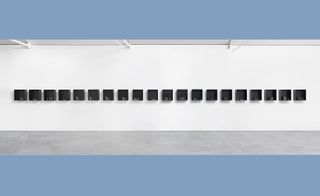
De Waal's interest began with 'trying to get as close to the first moment of porcelain in the west in Meissen, where they tried for 15 years to make white porcelain and they ended up making black porcelain because they couldn’t figure it out'. Pictured: ten thousand things, I-XX, 2015

‘Now it’s much, much more sculptural,' he continues. 'It’s an elbows-out kind of relationship between what’s going on with structure and objects.’ Pictured: ten thousand things, for John Cage, IX, 2015
INFORMATION
’Ten thousand things’ is on view until 18 February. For more information, visit the Gagosian’s website
Photography: Mike Bruce. Courtesy of the artist and Gagosian Gallery
ADDRESS
Gagosian Beverly Hills
456 North Camden Drive
Beverly Hills, California
Wallpaper* Newsletter
Receive our daily digest of inspiration, escapism and design stories from around the world direct to your inbox
-
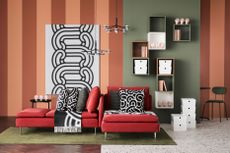 Ikea meets Japan in this new pattern-filled collection
Ikea meets Japan in this new pattern-filled collectionNew Ikea Sötrönn collection by Japanese artist Hiroko Takahashi brings Japan and Scandinavia together in a pattern-filled, joyful range for the home
By Rosa Bertoli Published
-
 Coming soon: a curated collection of all the new EVs and hybrids that matter
Coming soon: a curated collection of all the new EVs and hybrids that matterWe've rounded up new and updated offerings from Audi, Porsche, Ineos, Mini and more to keep tabs on the shifting sands of the mainstream car market
By Jonathan Bell Published
-
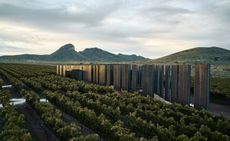 Southern Arizona sets the scene for a corking vineyard experience at Los Milics
Southern Arizona sets the scene for a corking vineyard experience at Los MilicsLos Milics winery, designed by Chen + Suchart Studio, is set among vines at the foothills of the Mustang Mountains
By Sofia de la Cruz Published
-
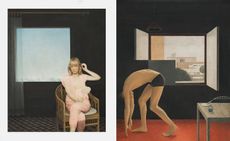 Surreal, uncanny, seductive: step into Graham Little’s world
Surreal, uncanny, seductive: step into Graham Little’s worldScottish artist Graham Little presents his first US retrospective at The FLAG Art Foundation in New York
By Hannah Silver Published
-
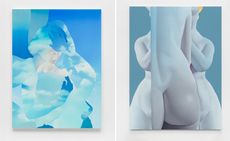 The cosmos meets art history in Vivian Greven’s New York exhibition
The cosmos meets art history in Vivian Greven’s New York exhibitionVivian Greven’s ‘When the Sun Hits the Moon’, at Perrotin in New York City, is the artist’s first solo exhibition in the USA
By Emily McDermott Published
-
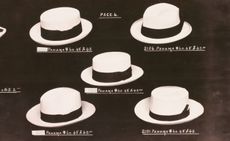 The Met’s ‘The Real Thing: Unpacking Product Photography’ dissects the avant-garde in early advertising
The Met’s ‘The Real Thing: Unpacking Product Photography’ dissects the avant-garde in early advertisingA new exhibition at The Metropolitan Museum of Art in New York explores the role of product photography and advertising in shaping the visual language of modernism
By Zoe Whitfield Published
-
 Detroit Institute of Arts celebrates Black cinema
Detroit Institute of Arts celebrates Black cinema‘Regeneration: Black Cinema 1898-1971’ at the Detroit Institute of Arts (DIA) brings lost or forgotten films, filmmakers and performers to a contemporary audience
By Anne Soward Published
-
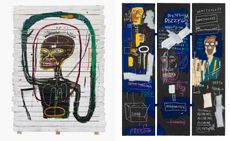 Jean-Michel Basquiat’s LA-made work goes on show at Gagosian
Jean-Michel Basquiat’s LA-made work goes on show at Gagosian‘Made on Market Street’ at Gagosian in Beverly Hills is the first show to present works made by the young artist between 1982 and 1984
By Hunter Drohojowska-Philp Published
-
 BLUM marks 30 years of Japanese contemporary art in America
BLUM marks 30 years of Japanese contemporary art in AmericaBLUM will take ‘Thirty Years: Written with a Splash of Blood’ to its New York space in September 2024, continuing its celebration of Japanese contemporary art in America
By Timothy Anscombe-Bell Published
-
 Todd Gray’s sculptural photography collages defy dimension, linearity and narrative
Todd Gray’s sculptural photography collages defy dimension, linearity and narrativeIn Todd Gray’s New York exhibition, he revisits his 40-year archive, fragmented into elaborated frames that open doors for new readings
By Osman Can Yerebakan Published
-
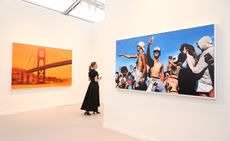 Frieze LA 2024 guide: the art, gossip and buzz
Frieze LA 2024 guide: the art, gossip and buzzOur Frieze LA 2024 guide includes everything you need to know and see in and around the fair
By Renée Reizman Published